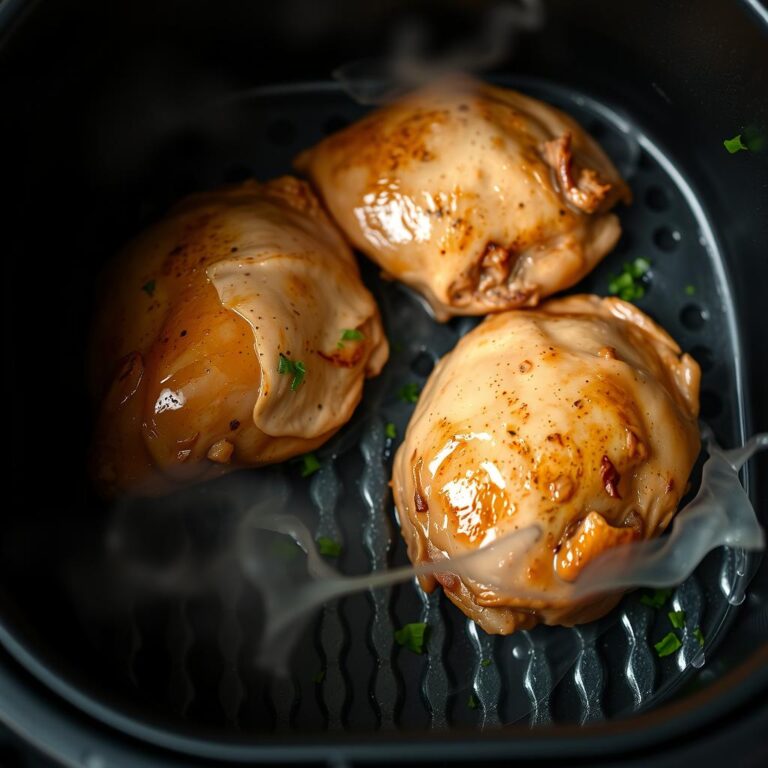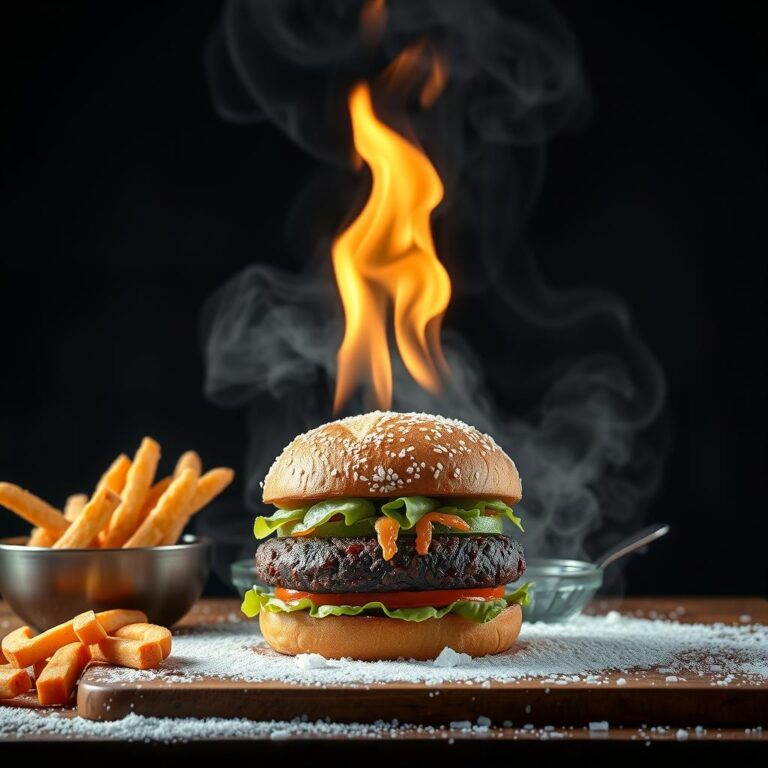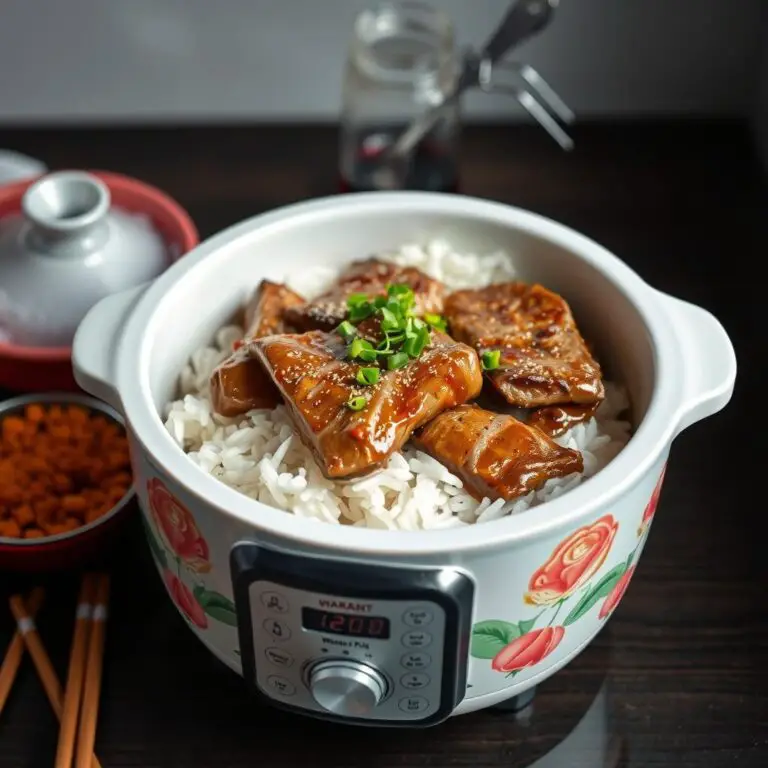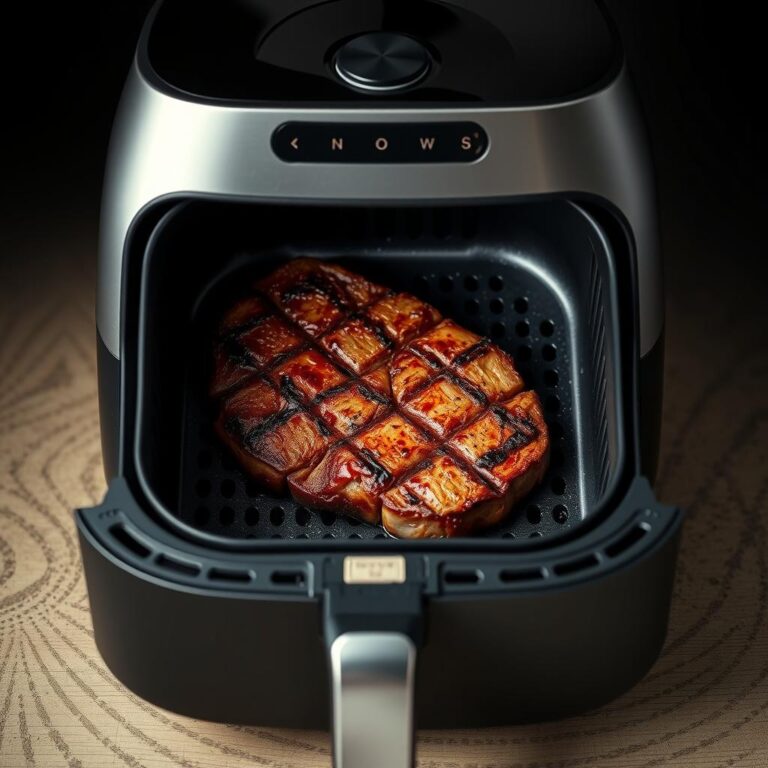Can you pressure cook a turkey? That's the question everyone's asking this Thanksgiving, and I'm here to tell you everything you need to know about pressure cooking turkey.
Why Pressure Cook a Turkey?
Pressure cooking a turkey sounds kinda wild, right?
But think about it: Thanksgiving dinner is a marathon, not a sprint.
Roasting a whole turkey in the oven takes hours, hogging up oven space and demanding constant attention.
- Speed: Pressure cooking drastically cuts down cooking time. We're talking about getting a fully cooked turkey in a fraction of the time compared to traditional roasting.
- Moisture: Pressure cooking traps moisture, resulting in a super juicy and tender turkey. No more dry, flavorless breast meat.
- Convenience: Free up your oven for side dishes! This is a game-changer when you're juggling multiple recipes.
Can You Really Pressure Cook a Turkey?
Yes, absolutely, you can pressure cook a turkey!
It's not just possible, it can be downright amazing, especially when you are short on time.
But here's the deal: you're likely not going to pressure cook a whole, massive bird.
We're talking about smaller turkeys, turkey breasts, or turkey parts.
- Size Matters: Your pressure cooker has size limits. A huge turkey won't fit, period.
- Even Cooking: Smaller cuts ensure even cooking throughout, avoiding some parts being overcooked while others are undercooked.
- Flavor Infusion: Pressure cooking infuses flavor deep into the meat, creating a more delicious end result.
What Kind of Turkey Works Best for Pressure Cooking?
Alright, so you're on board with the idea of pressure cooking some turkey, but what should you actually buy?
Think smaller scale and faster cooking.
- Turkey Breast: This is the ideal cut. It fits easily into most pressure cookers and cooks quickly and evenly.
You can buy a bone-in or boneless turkey breast, depending on your preference. - Turkey Thighs and Drumsticks: These are great options if you're looking for dark meat.
They're flavorful and become incredibly tender when pressure cooked. - Smaller Whole Turkey (If It Fits!): If you have a large pressure cooker, you might be able to squeeze in a small turkey (think 10 pounds or less).
But double-check the dimensions of your pressure cooker before you buy.
Essential Equipment for Pressure Cooking Turkey
Before you dive in, make sure you have the right tools for the job.
Trust me, being prepared will make the whole process way smoother.
- Pressure Cooker: This is the most important piece of equipment!
Make sure it's clean, functioning properly, and large enough for the turkey cut you've chosen. An Instant Pot or similar electric pressure cooker works great. - Trivet: A trivet is a rack that sits inside the pressure cooker and keeps the turkey from sitting directly on the bottom of the pot.
This prevents burning and ensures even cooking. - Meat Thermometer: This is crucial for ensuring that the turkey is cooked to a safe internal temperature (165°F).
- Liquid Measuring Cup: You'll need to add liquid to the pressure cooker to create steam.
Prepping Your Turkey for Pressure Cooking: Setting the Stage for Success
Okay, you've got your turkey, your equipment, now comes the prep work.
This isn't rocket science, but a few key steps will make all the difference in the final outcome.
- Thawing (If Frozen): If your turkey is frozen, thaw it completely in the refrigerator.
This can take a few days, so plan ahead. Never thaw a turkey at room temperature, as this can lead to bacteria growth. - Brining (Optional): Brining is soaking the turkey in a saltwater solution.
This helps to season the meat and keep it moist during cooking. - Seasoning: Don't be shy with the seasonings!
Rub the turkey with your favorite herbs, spices, and salt. Get creative with garlic powder, onion powder, paprika, rosemary, thyme, and sage. - Browning (Optional): Some people like to brown the turkey before pressure cooking it.
This adds extra flavor and color. You can do this in a skillet on the stovetop or use the "sauté" function on your pressure cooker.
Pressure Cooking Turkey: A Step-by-Step Guide for Delicious Results
Alright, here's where the magic happens!
Follow these steps for perfectly pressure-cooked turkey every time.
- Prepare the Pressure Cooker: Place the trivet in the bottom of the pressure cooker.
- Add Liquid: Pour in the required amount of liquid (usually water or chicken broth).
Refer to your pressure cooker's manual for the exact amount.
Generally, 1-2 cups of liquid is sufficient. - Place Turkey in Cooker: Carefully place the turkey (or turkey pieces) on top of the trivet.
Make sure it's not touching the sides of the pot too much. - Seal and Cook: Secure the lid of the pressure cooker and set it to the appropriate cooking time.
The cooking time will vary depending on the size and type of turkey. See the chart below for guidelines. - Natural Pressure Release: Once the cooking time is up, let the pressure release naturally for 10-15 minutes.
This helps the turkey retain its moisture. Then, carefully release any remaining pressure. - Check Temperature: Use a meat thermometer to check the internal temperature of the turkey.
It should reach 165°F in the thickest part. - Rest: Let the turkey rest for 10-15 minutes before carving and serving.
This allows the juices to redistribute, resulting in a more tender and flavorful bird.
So, can you pressure cook a turkey? You absolutely can.
Can you pressure cook a turkey? That's the question everyone's asking this Thanksgiving, and I'm here to tell you everything you need to know about pressure cooking turkey.
Why Pressure Cook a Turkey?
Pressure cooking a turkey sounds kinda wild, right?
But think about it: Thanksgiving dinner is a marathon, not a sprint.
Roasting a whole turkey in the oven takes hours, hogging up oven space and demanding constant attention.
- Speed: Pressure cooking drastically cuts down cooking time. We're talking about getting a fully cooked turkey in a fraction of the time compared to traditional roasting.
- Moisture: Pressure cooking traps moisture, resulting in a super juicy and tender turkey. No more dry, flavorless breast meat.
- Convenience: Free up your oven for side dishes! This is a game-changer when you're juggling multiple recipes.
Can You Really Pressure Cook a Turkey?
Yes, absolutely, you can pressure cook a turkey!
It's not just possible, it can be downright amazing, especially when you are short on time.
But here's the deal: you're likely not going to pressure cook a whole, massive bird.
We're talking about smaller turkeys, turkey breasts, or turkey parts.
- Size Matters: Your pressure cooker has size limits. A huge turkey won't fit, period.
- Even Cooking: Smaller cuts ensure even cooking throughout, avoiding some parts being overcooked while others are undercooked.
- Flavor Infusion: Pressure cooking infuses flavor deep into the meat, creating a more delicious end result.
What Kind of Turkey Works Best for Pressure Cooking?
Alright, so you're on board with the idea of pressure cooking some turkey, but what should you actually buy?
Think smaller scale and faster cooking.
- Turkey Breast: This is the ideal cut. It fits easily into most pressure cookers and cooks quickly and evenly.
You can buy a bone-in or boneless turkey breast, depending on your preference. - Turkey Thighs and Drumsticks: These are great options if you're looking for dark meat.
They're flavorful and become incredibly tender when pressure cooked. - Smaller Whole Turkey (If It Fits!): If you have a large pressure cooker, you might be able to squeeze in a small turkey (think 10 pounds or less).
But double-check the dimensions of your pressure cooker before you buy.
Essential Equipment for Pressure Cooking Turkey
Before you dive in, make sure you have the right tools for the job.
Trust me, being prepared will make the whole process way smoother.
- Pressure Cooker: This is the most important piece of equipment!
Make sure it's clean, functioning properly, and large enough for the turkey cut you've chosen. An Instant Pot or similar electric pressure cooker works great. - Trivet: A trivet is a rack that sits inside the pressure cooker and keeps the turkey from sitting directly on the bottom of the pot.
This prevents burning and ensures even cooking. - Meat Thermometer: This is crucial for ensuring that the turkey is cooked to a safe internal temperature (165°F).
- Liquid Measuring Cup: You'll need to add liquid to the pressure cooker to create steam.
Prepping Your Turkey for Pressure Cooking: Setting the Stage for Success
Okay, you've got your turkey, your equipment, now comes the prep work.
This isn't rocket science, but a few key steps will make all the difference in the final outcome.
- Thawing (If Frozen): If your turkey is frozen, thaw it completely in the refrigerator.
This can take a few days, so plan ahead. Never thaw a turkey at room temperature, as this can lead to bacteria growth. - Brining (Optional): Brining is soaking the turkey in a saltwater solution.
This helps to season the meat and keep it moist during cooking. - Seasoning: Don't be shy with the seasonings!
Rub the turkey with your favorite herbs, spices, and salt. Get creative with garlic powder, onion powder, paprika, rosemary, thyme, and sage. - Browning (Optional): Some people like to brown the turkey before pressure cooking it.
This adds extra flavor and color. You can do this in a skillet on the stovetop or use the "sauté" function on your pressure cooker.
Pressure Cooking Turkey: A Step-by-Step Guide for Delicious Results
Alright, here's where the magic happens!
Follow these steps for perfectly pressure-cooked turkey every time.
- Prepare the Pressure Cooker: Place the trivet in the bottom of the pressure cooker.
- Add Liquid: Pour in the required amount of liquid (usually water or chicken broth).
Refer to your pressure cooker's manual for the exact amount.
Generally, 1-2 cups of liquid is sufficient. - Place Turkey in Cooker: Carefully place the turkey (or turkey pieces) on top of the trivet.
Make sure it's not touching the sides of the pot too much. - Seal and Cook: Secure the lid of the pressure cooker and set it to the appropriate cooking time.
The cooking time will vary depending on the size and type of turkey. See the chart below for guidelines. - Natural Pressure Release: Once the cooking time is up, let the pressure release naturally for 10-15 minutes.
This helps the turkey retain its moisture. Then, carefully release any remaining pressure. - Check Temperature: Use a meat thermometer to check the internal temperature of the turkey.
It should reach 165°F in the thickest part. - Rest: Let the turkey rest for 10-15 minutes before carving and serving.
This allows the juices to redistribute, resulting in a more tender and flavorful bird.
So, can you pressure cook a turkey? You absolutely can.
Pressure Cooking Turkey Times: A Quick Guide
Need a cheat sheet for how long to pressure cook your turkey?
I got you covered.
| Turkey Cut | Size | Pressure Cooking Time |
|---|---|---|
| Boneless Turkey Breast | 2-3 pounds | 25-30 minutes |
| Bone-in Turkey Breast | 4-6 pounds | 35-40 minutes |
| Turkey Thighs | 1-2 pounds | 20-25 minutes |
| Turkey Drumsticks | 1-2 pounds | 22-27 minutes |
| Small Whole Turkey | Up to 10 pounds | 6-8 minutes per pound |
Note: These times are approximate and may vary depending on your pressure cooker. Always use a meat thermometer to ensure the turkey is cooked to a safe internal temperature of 165°F.
Tips and Tricks for the Best Pressure Cooker Turkey
Want to level up your pressure cooker turkey game?
Here are some secrets:
- Don't Overcrowd the Pot: Make sure the turkey isn't crammed into the pressure cooker.
Overcrowding can lead to uneven cooking. - Use a Flavorful Broth: Instead of just water, use chicken broth or turkey broth for added flavor.
You can even add some white wine or beer for an extra kick. - Add Aromatics: Throw in some chopped onions, carrots, and celery to the pressure cooker for even more flavor.
These aromatics will infuse the turkey with a delicious savory taste. - Crisp the Skin (Optional): If you want crispy skin, you can broil the turkey in the oven for a few minutes after pressure cooking it.
Just be sure to watch it closely so it doesn't burn. - Make Gravy: Don't throw away the liquid left in the pressure cooker!
It's full of flavor and makes a fantastic gravy. Just strain it, thicken it with a little cornstarch or flour, and season to taste.
Flavor Variations for Your Pressure Cooked Turkey
Bored with the same old turkey flavor?
Let's mix things up!
- Lemon Herb: Rub the turkey with lemon zest, garlic, rosemary, thyme, and olive oil.
The lemon brightens the flavor and the herbs add a classic touch. - Spicy Cajun: Use a Cajun seasoning blend with paprika, cayenne pepper, garlic powder, onion powder, and oregano.
This gives the turkey a spicy kick that's sure to impress. - Maple Glazed: Brush the turkey with a mixture of maple syrup, Dijon mustard, and apple cider vinegar during the last few minutes of cooking.
This creates a sweet and tangy glaze that's perfect for the holidays. - Smoked Paprika: Rub the turkey with smoked paprika, brown sugar, and garlic powder for a smoky and sweet flavor.
This variation is especially good if you like barbecue flavors. - Mediterranean: Use a blend of oregano, basil, sun-dried tomatoes, and feta cheese for a Mediterranean twist.
This flavor profile is fresh and vibrant.
Common Mistakes to Avoid When Pressure Cooking Turkey
Nobody's perfect, but avoiding these mistakes will get you closer.
- Not Thawing the Turkey Completely: This is a big one!
A partially frozen turkey will cook unevenly. - Overfilling the Pressure Cooker: As mentioned before, overcrowding leads to uneven cooking.
Follow the maximum fill line on your pressure cooker. - Not Using Enough Liquid: You need enough liquid to create steam, which is essential for pressure cooking.
Always follow the manufacturer's instructions for the amount of liquid. - Releasing the Pressure Too Quickly: A natural pressure release is best for maintaining moisture.
A quick release can cause the turkey to dry out. - Not Checking the Internal Temperature: Don't guess!
Use a meat thermometer to ensure the turkey is cooked to a safe internal temperature of 165°F.
Internal Linking Opportunities
For more Thanksgiving tips, check out my article on [Perfect Thanksgiving Side Dishes] (insert link here) or if you're looking to experiment with different proteins check out [Pressure Cooking Chicken: A Comprehensive Guide] (insert link here).
These articles complement this one and provide even more value for your holiday cooking.
FAQ: Answering Your Pressure Cooked Turkey Questions
Got questions about pressure cooking turkey?
Let's tackle them.
- Can I pressure cook a frozen turkey? No, you should always thaw your turkey completely before pressure cooking it.
- How do I know when the turkey is done? Use a meat thermometer to check the internal temperature in the thickest part of the thigh. It should reach 165°F.
- Can I add stuffing to the pressure cooker with the turkey? It's not recommended. The stuffing will likely become mushy. It's best to cook stuffing separately.
- What if my turkey is too big for my pressure cooker? Cut the turkey into smaller pieces or just pressure cook a turkey breast instead.
- My turkey is cooked but the skin isn't brown. What do I do? You can broil the turkey in the oven for a few minutes to crisp up the skin.
Conclusion: Mastering the Art of Pressure Cooking Turkey
So, there you have it – everything you need to know about how you can pressure cook a turkey.
It's faster, it's juicier, and it frees up your oven for all those delicious side dishes.
Give it a try this Thanksgiving, and get ready to impress your friends and family with a perfectly cooked, tender, and flavorful bird, showing that you absolutely can pressure cook a turkey.







